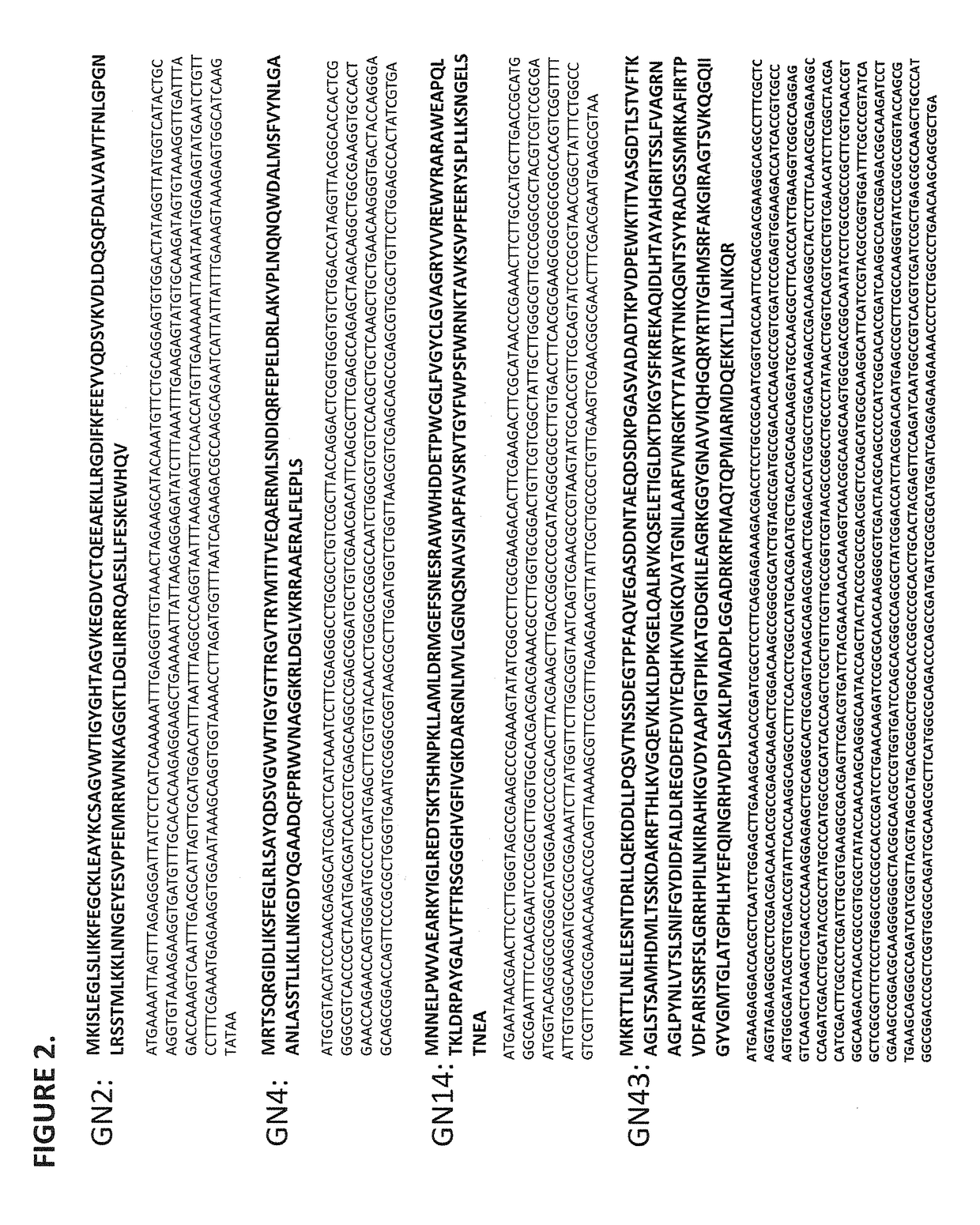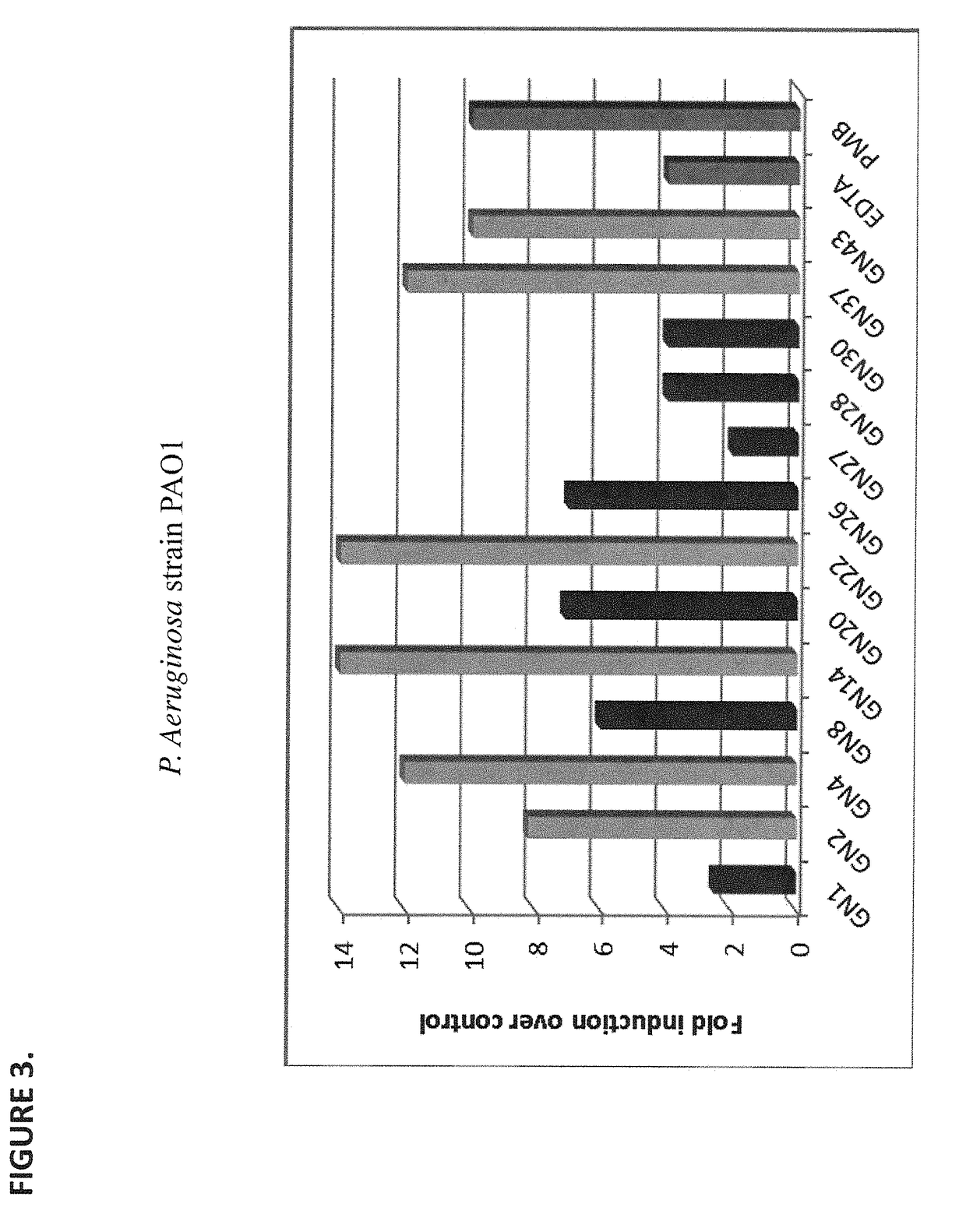Lysin polypeptides active against gram-negative bacteria
a technology of lysin and gram-negative bacteria, applied in the direction of antibacterial agents, peptide/protein ingredients, spray delivery, etc., can solve the problems of limited use of lysins for treating gram-negative bacteria infections, significant threat of gram-negative pathogens, etc., and achieve the effect of reducing the population
- Summary
- Abstract
- Description
- Claims
- Application Information
AI Technical Summary
Benefits of technology
Problems solved by technology
Method used
Image
Examples
embodiments
[0075]The present disclosure relates to new antibacterial agents against Gram-negative bacteria. In particular, the present disclosure relates to lysin polypeptides (including active fragments thereof) active against Gram-negative bacteria, such as Pseudomonas aeruginosa. Examples of such lysin polypeptides are those having an amino acid sequence within the set SEQ ID NO: 1-SEQ ID NO: 10. The native sequences were identified by bioinformatics techniques from a previously sequenced but partially elucidated phage genome. Although some of the sequences thus identified had been annotated as putative endolysins, no function had been previously definitively attributed to polypeptides having these sequences. Moreover, several sequences annotated as putative endolysisns, on synthesis or expression, turned out to be wholly devoid of lysin activity or inactive against the target pathogen. On isolation, expression and testing, only a handful of the bioinformatically identified sequences in fac...
example 1
Identification of Gram Negative Lysins
[0156]Putative PGH candidates, that may be used to kill Gram-negative bacteria, were identified using a bioinformatics search protocol. First, the inventors generated a short list of P. aeruginosa PGHs obtained from annotated genome sequences that were screened with search terms for bacteriophage lysins, including “amidase”, “lysozyme”, “glucosaminidase”, “endopeptidase”, “peptidoglycan hydrolase”, “lytic transglycosylase”, “endolysin”, “lysin”, and “cell wall hydrolase”. The PGHs identified in this manner were then used to search, by BLASTP analysis, all P. aeruginosa genome sequences in GenBank (P. aeruginosa group; Taxid: 136841) and the genomic sequence of Micavibrio aeruginosavorus strain ARL-13 to generate a larger group of putative PGHs. A subset of this group, comprised of 46 PGHs, was then chosen for further study—the criteria for inclusion here was diversity with respect to sequence conservation and including both highly and poorly con...
example 2
GN Lysins Exhibit Strong Antibacterial Activity Against Gram-Negative Bacteria
[0161]In order to evaluate the antibacterial activity of purified lysins, the viability of live P. aeruginosa strain PAO1 following the incubation with individual GN lysins was evaluated. Briefly, 106 PAO1 cells were treated with the indicated GN lysin at a concentration of 25 mcg / ml for 1 hour (at 37° C., without agitation) in the presence of 20 mM Tris-HCl (pH 7.2) buffer. Polymyxin B (PMB, at 25 mcg / ml), novobiocin (Nov, at 5 mcg / ml), EDTA (1 mM) and human lysozyme (HuLYZ, at 25 mcg / ml) were used as controls. The threshold of detection was 2.0 Log10 CFU / ml.
[0162]As FIG. 4 shows, each GN lysin exhibited greater antibacterial activity than either HuLYZ or novobiocin, while each of GN4 (SEQ ID NO: 3), GN14 (SEQ ID NO: 4), and GN37 (SEQ ID NO: 1) showed stronger or equivalent antibacterial activity when compared to EDTA and PMB respectively.
[0163]This experiment demonstrates that GNs can exhibit equivalent ...
PUM
| Property | Measurement | Unit |
|---|---|---|
| pKa | aaaaa | aaaaa |
| ionic strength | aaaaa | aaaaa |
| time | aaaaa | aaaaa |
Abstract
Description
Claims
Application Information
 Login to View More
Login to View More - R&D
- Intellectual Property
- Life Sciences
- Materials
- Tech Scout
- Unparalleled Data Quality
- Higher Quality Content
- 60% Fewer Hallucinations
Browse by: Latest US Patents, China's latest patents, Technical Efficacy Thesaurus, Application Domain, Technology Topic, Popular Technical Reports.
© 2025 PatSnap. All rights reserved.Legal|Privacy policy|Modern Slavery Act Transparency Statement|Sitemap|About US| Contact US: help@patsnap.com



